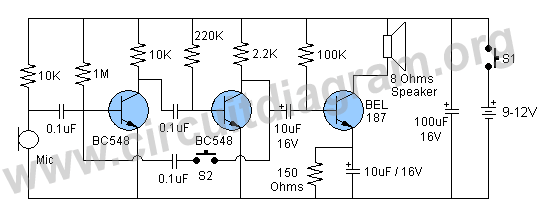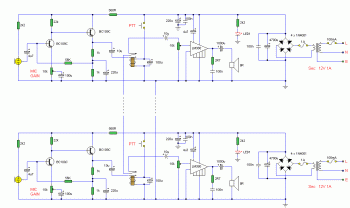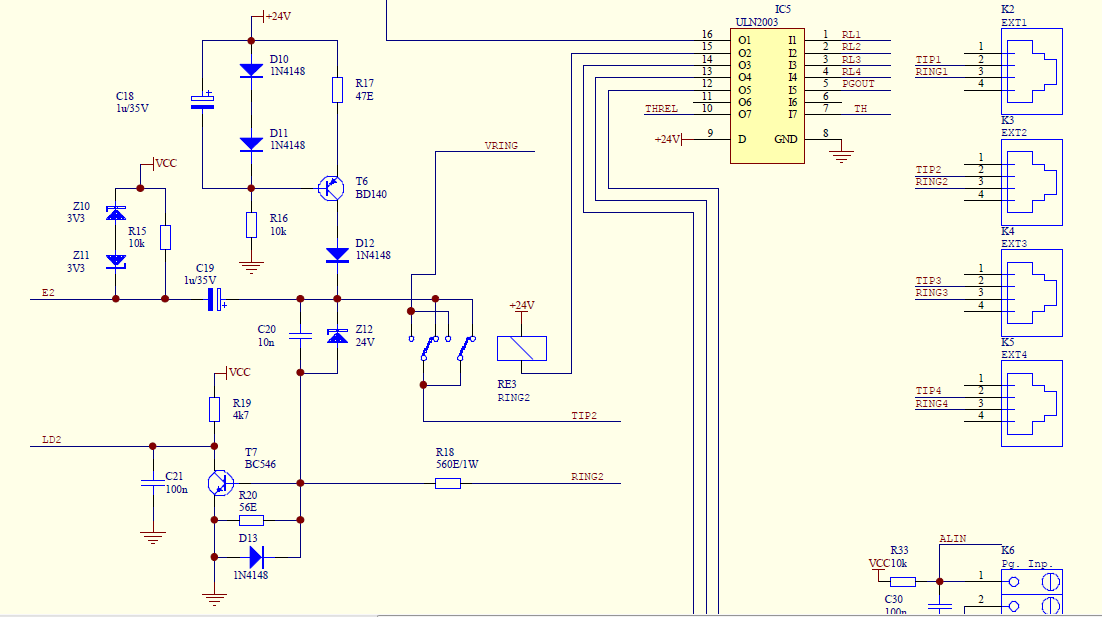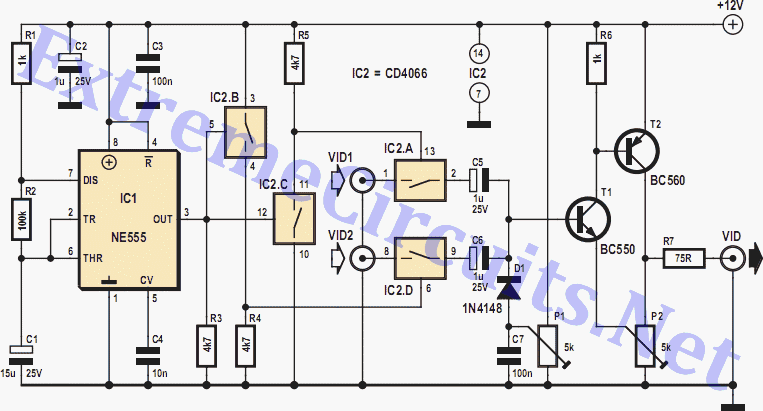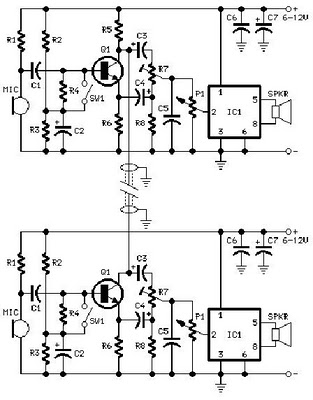
Intercommunication Intercom
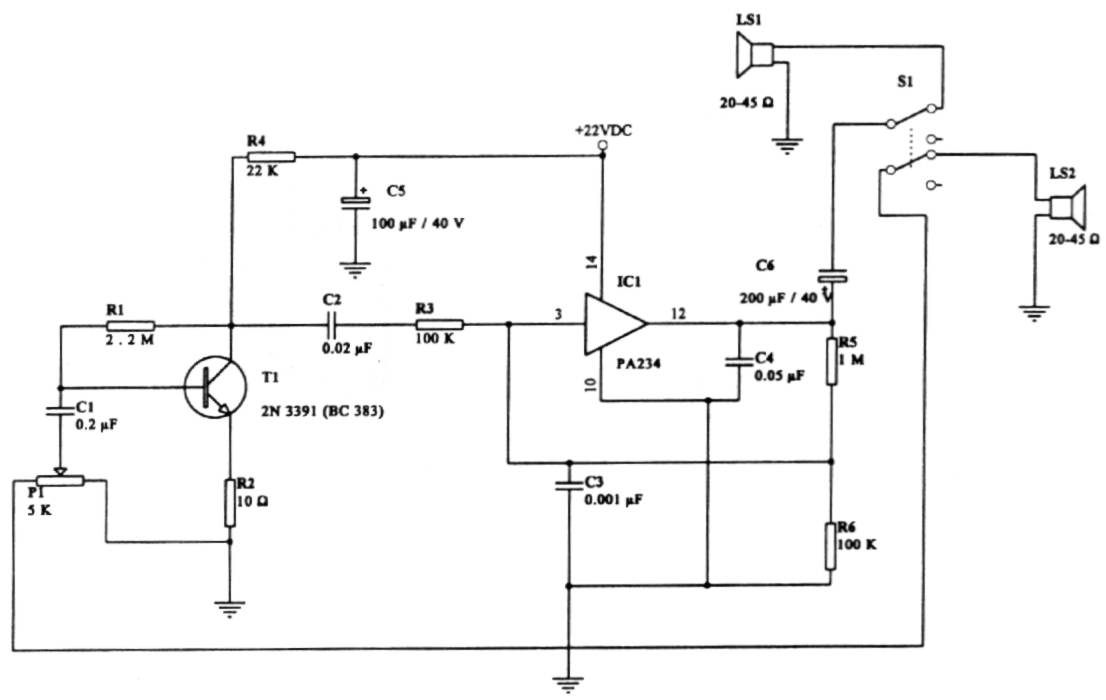
This intercom circuit is versatile and can be utilized in various applications. It operates at 22V, although it may function at a lower voltage (experimental testing is suggested). The circuit employs a loudspeaker with an impedance of 20-45 Ohms on each end for input and output.
The intercom circuit is designed to facilitate two-way audio communication, making it suitable for residential, commercial, or industrial use. It comprises a power supply unit that converts the mains voltage to the required 22V. The circuit utilizes an operational amplifier to enhance audio signals, ensuring clear communication between the two loudspeakers.
Each loudspeaker is connected to the circuit through a coupling capacitor, which blocks any DC component while allowing AC audio signals to pass. This configuration prevents potential damage to the speakers and maintains audio quality. The 20-45 Ohm impedance range allows for compatibility with a variety of loudspeakers, making the system adaptable to different environments.
To ensure optimal performance, it is advisable to use a regulated power supply to maintain a consistent voltage level. Additionally, the circuit may include a volume control potentiometer for each speaker, allowing users to adjust the audio levels according to their preferences.
The intercom circuit can be enclosed in a durable housing to protect the components from environmental factors while providing easy access to the loudspeakers and controls. This design consideration enhances the longevity and reliability of the intercom system in various settings.This is a great intercom circuit that can be used in many ways. It uses 22V to operate and maybe it will work at a lower voltage (you can try it). For input/output it uses a loundspeaker (20-45 Ohm) on each side. 🔗 External reference
The intercom circuit is designed to facilitate two-way audio communication, making it suitable for residential, commercial, or industrial use. It comprises a power supply unit that converts the mains voltage to the required 22V. The circuit utilizes an operational amplifier to enhance audio signals, ensuring clear communication between the two loudspeakers.
Each loudspeaker is connected to the circuit through a coupling capacitor, which blocks any DC component while allowing AC audio signals to pass. This configuration prevents potential damage to the speakers and maintains audio quality. The 20-45 Ohm impedance range allows for compatibility with a variety of loudspeakers, making the system adaptable to different environments.
To ensure optimal performance, it is advisable to use a regulated power supply to maintain a consistent voltage level. Additionally, the circuit may include a volume control potentiometer for each speaker, allowing users to adjust the audio levels according to their preferences.
The intercom circuit can be enclosed in a durable housing to protect the components from environmental factors while providing easy access to the loudspeakers and controls. This design consideration enhances the longevity and reliability of the intercom system in various settings.This is a great intercom circuit that can be used in many ways. It uses 22V to operate and maybe it will work at a lower voltage (you can try it). For input/output it uses a loundspeaker (20-45 Ohm) on each side. 🔗 External reference
